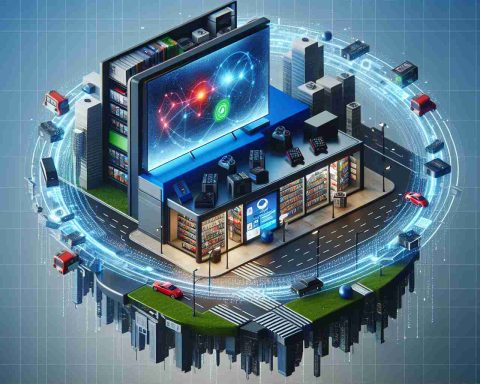The Mazda6: A Lasting Legacy in Australia
Since its introduction in Australia in 2002, the Mazda6 has become a significant player in the automotive market, with nearly 150,000 units sold over the years. Despite having only two generations—with the first running from 2002 to 2013 and the second currently available—the model has made a substantial impact on the brand’s reputation.
Mazda Australia’s managing director, Vinesh Bhindi, reflects on the remarkable journey of the Mazda6. He notes that the vehicle has played a crucial role in shaping Mazda’s identity, particularly since its launch aligned with the brand’s “Zoom Zoom” philosophy. This model quickly earned accolades for its front-wheel drive dynamics, setting a standard in its class.
Although consumer preference has shifted towards SUVs in recent years, the Mazda6 continues to be cherished by a dedicated fan base of driving enthusiasts. Even though production has concluded, Mazda Australia has ensured a robust stock of new Mazda6 vehicles, promising availability in the months ahead.
In early analysis for 2024, the Mazda6 found itself selling 1,354 units, representing 5.5% of the declining mainstream medium car segment. This places it behind major competitors like the Toyota Camry and BYD Seal. Buyers looking for a blend of style and performance still recognize the enduring value of the Mazda6 in an evolving market.
Legacy Beyond the Roads
The enduring popularity of the Mazda6 in Australia is more than just an automotive story; it reflects significant trends impacting society and culture. As consumer preferences shift towards SUVs, the loyalty of Mazda6 fans underscores a deeper connection to traditional sedans, which symbolize a blend of performance and craftsmanship. This loyalty hints at a cultural nostalgia for vehicles that prioritize driving experience over sheer practicality, fostering a community of enthusiasts dedicated to the art of motoring.
From an economic perspective, the Mazda6’s sales figures, including its 1,354 units sold in 2024, provide insights into the broader automotive market trends. The model captures a smaller share of a declining segment, yet highlights the resilience of brands that can innovate despite challenging conditions. As established manufacturers like Mazda adapt to changing dynamics, they influence the global economy by balancing tradition with modern consumer demands, ultimately impacting job markets and supply chains.
Environmentally, the transition away from sedans towards larger vehicles has implications for emissions and urban planning. While sedans like the Mazda6 are generally more fuel-efficient than their SUV counterparts, the pivot towards SUVs raises concerns about the environmental footprint of personal vehicle use. As city landscapes evolve, companies will need to consider how future models can adapt to rising sustainability expectations and urban mobility trends.
Ultimately, the Mazda6 serves as a testament to enduring brand loyalty and the long-term significance of well-crafted automobiles within an increasingly fragmented market. Its legacy prompts discussions about the future direction of the automotive industry, and whether the joy of driving can coexist with contemporary environmental demands.
Is the Mazda6 Still Relevant in Today’s SUV-Centric Market?
The Mazda6: A Lasting Legacy in Australia
Since its debut in Australia in 2002, the Mazda6 has established itself as a key player in the automotive market, with nearly 150,000 units sold. The model, which boasts two generations— the first from 2002 to 2013 and the second still available today—has significantly influenced Mazda’s reputation for quality and performance.
FAQs About the Mazda6
What makes the Mazda6 stand out among competitors?
The Mazda6 is known for its sporty handling and stylish design, which resonate well with driving enthusiasts. Its “Zoom Zoom” philosophy emphasizes spirited driving, making it a unique choice in a market leaning towards SUVs.
How does the Mazda6 perform in fuel efficiency?
The Mazda6 offers competitive fuel efficiency, which varies by engine choice, but many users report good mileage, particularly with the Skyactiv engine technology that maximizes performance without compromising on economy.
Pros and Cons of the Mazda6
Pros:
– Stylish Design: The Mazda6 features a sleek, modern aesthetic both inside and out.
– Responsive Handling: It provides a connected driving experience that enthusiasts appreciate.
– Reliability: Generally high reliability ratings contribute to its enduring legacy.
Cons:
– Limited Rear Space: Compared to SUVs, the Mazda6 may feel cramped for larger families.
– Declining Popularity: As consumer preferences shift towards SUVs, sales are impacted, placing the Mazda6 behind competitors like the Toyota Camry.
Current Market Trends
Despite the decline of the medium car segment, with Mazda6 selling 1,354 units in early 2024—5.5% of the market—it still retains a loyal customer base. The vehicle’s reputation for quality and engaging driving experience remains significant, especially as buyers seek alternatives to traditional SUVs. According to market analysts, the Mazda6 is likely to continue attracting consumers interested in performance-oriented sedans.
Innovations and Features
Mazda continues to equip the Mazda6 with advanced features, including:
– i-Activsense Safety Technology: This suite of safety features enhances driver awareness.
– Infotainment System: The latest models come with comprehensive connectivity options, ensuring drivers stay connected while on the road.
– Premium Interior Materials: The interior combines functionality with luxury, focusing on driver-centric ergonomics.
Sustainability and Future Insights
Mazda is increasingly focused on sustainability and innovation in its vehicle line-up. While the Mazda6 production has concluded, the brand’s commitment to sustainable practices remains. Future models are expected to integrate hybrid or electric drivetrains in response to global shifts towards greener alternatives.
Conclusion
Although the Mazda6 faces challenges in a market dominated by SUVs, its combination of performance, style, and reliability continues to resonate with a dedicated fan base. As Mazda looks to the future, innovations and a strong commitment to sustainability may help keep the Mazda6 relevant in a rapidly changing automotive landscape.
For more insights and the latest updates, visit Mazda Australia.












